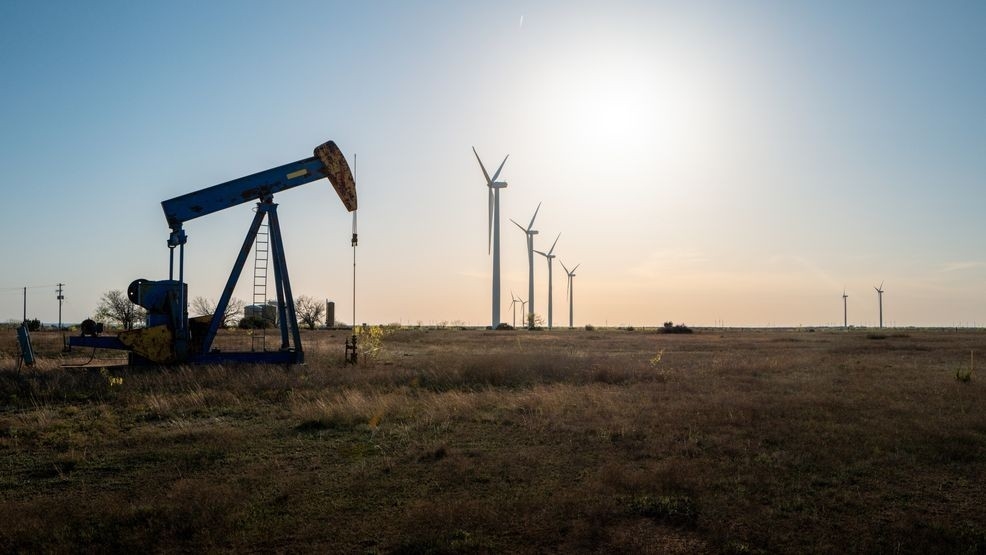Description
(TNND) — A majority of Americans favor expanded use of wind and solar energy over fossil fuel sources, but that support has softened over the last five years.
And the decline in public support for renewable energy has been fueled by a sharp drop of support among Republicans, according to a new report from the Pew Research Center.
Five years ago, two-thirds of Republicans wanted to prioritize renewable energy production.
Today, just a third of Republicans feel the same.
And 67% of Republicans want to prioritize expanded exploration and production of oil, coal and natural gas.
Republicans seem to be with President Donald Trump and his “drill, baby, drill” rallying cry that emphasizes fossil fuel production.
Trump declared a national energy emergency on Day 1 of his new term, formed a National Energy Dominance Council and lifted environmental rules for coal plants.
The “One Big Beautiful Bill Act” would accelerate the expiration of clean vehicle credits enacted under President Joe Biden.
And the White House said Trump’s bill “ends Biden’s war on American energy” and “unleashes American energy dominance by opening federal lands and waters to oil, gas, coal, geothermal, and mineral leasing."
The Pew Research Center’s new survey found that 60% of Americans still favor expanding wind and solar energy.
But that’s down from 79% support in 2020.
Democratic support for those renewable energy options is only slightly down from five years ago, 86% compared to 91% in 2020.
Republican support over the last five years has increased for offshore drilling, fracking and coal mining.
Both Republicans and Democrats are more in favor of nuclear power now than they were five years ago.
Should energy be a partisan issue?
“No, energy policy is strictly nonpartisan. It's all about cost and benefits,” University of Houston energy economist Ed Hirs said.
But Rice University energy economist Kenneth Medlock said energy tends to get politicized, even though it doesn’t need to be that way.
“In the end, however, individuals want affordability, reliability, and environmental sensibility ... to all matter,” said Medlock, calling those factors “three legs of a stool.”
Politicians will pick a leg of the stool to focus on based on their constituency, Medlock said.
But energy policy should recognize the trade-offs that exist with various energy sources.
And he said wind, solar, oil, natural gas and coal all have a role to play in giving the country a balanced and diverse portfolio.
“Policy must find a way to successfully manage that balancing act,” he said via email.
Todd Belt, the Political Management program director at George Washington University, said support for renewable energy has long been tied to concerns about global warming and climate change.
“If you believe the science, then it becomes imperative to take ... action,” Belt said via email. “It’s hard to admit that the world is facing disasters and not to support a remedy. Conservatives’ faith in science has been decreasing, especially since COVID.”
Belt said Biden’s legislation promoting renewable energy made the topic more salient for Republicans.
“One way to stimulate the base of one party is through disdain for what the other party promotes,” Belt said.
Medlock said geography also matters, not just political affiliation.
“When jobs are connected to activities and infrastructure, that tends to have a larger impact than political affiliation,” he said. “There is evidence that blue districts in energy rich locations also tend to have a more favorable view of oil and gas.”
Hirs said energy decisions are driven by consumers and by regulators, and one size doesn't fit all.
The electric grid that powers people's homes and businesses isn’t a national enterprise, he said.
The grid varies from state to state.
That grid can be powered by natural gas, coal, nuclear, wind and solar.
Natural gas is the leading source now.
But Hirs said he expects solar to eventually win out, because it’s the low-cost option.
Political forces aside, he said the economics always matter most.
“There's a 1.3-gigawatt solar plant going in north of Dallas on 18,000 acres,” Hirs said. “It's going to have 12 full-time employees, and I think half of those are shepherds. For the same size nuclear power station, 1.3 gigawatts, we're talking about 500 employees. And, of course, there's a cost of fuel. The coal power plants, the natural gas power plants, obviously are somewhere in between. Plus, they have a cost of fuel. Economists will tell you that the low marginal cost supply will eventually dominate. That would mean a solar farm. But without adequate batteries and supporting backup, we’re not going to get there for five to 10 years. It's going to require a significant build-out. And this is not a partisan issue. It relates really to the way we've constructed electricity markets across the United States.”
Meanwhile, Hirs said both gas-powered cars and electric cars can make sense for different people based on the costs to operate.
Electric cars cost more to buy, so a customer might have to drive for five to seven years before they start saving money on a battery-powered vehicle.
Hirs said Americans will need more power in the coming years, and they’ll want the cheapest options they can get.
“We need more for this grid,” he said. “Our demand is going up, and it's not because of EVs. It's because we have electrification of darn near everything in the house, everything in manufacturing facilities.”
Other Related News
06/06/2025
VALDOSTA Ga WALB - A math teacher and golf coach at Lowndes High School was arrested on Ju...
06/06/2025
COFFEE COUNTY Ga WALB - South Georgia is home to many hard-working men and women who provi...
06/06/2025
TIFTON Ga WALB - A Tifton resident has been sentenced to 20 years in federal prison for tr...
06/06/2025
ATLANTA Ga Atlanta News First - An additional case of the measles has been reported in Geo...
06/06/2025








